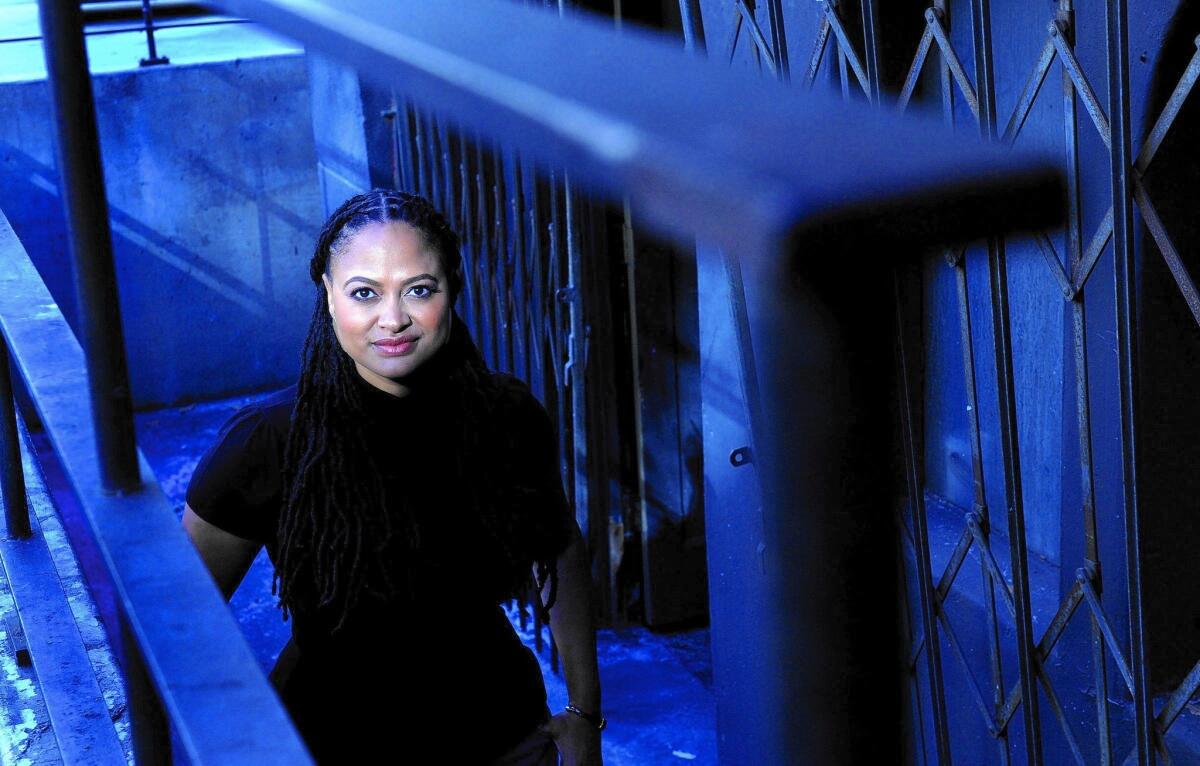On-location filming in L.A. area rose 6% in 2016, lifted by California tax incentives

- Share via
The Los Angeles region saw the number of on-location production shoots rise about 6% in 2016, thanks mainly to state tax breaks that lured movies and TV shows back to Southern California.
Feature movies like Disney’s “A Wrinkle in Time,” from director Ava DuVernay, and Netflix’s “Bright” took advantage of the program, boosting local production. But commercials and reality TV production took a hit during the year, according to a new report from FilmLA Inc., the nonprofit group that oversees film permits in the city and county.
For 2016, the total number of shoot days in the L.A. area rose to 39,605 days, up 6.2% from 37,289 days the year before. TV still accounts for the bulk of production with 16,463 shoot days, up 4.8% from the previous year.
But feature film activity saw the biggest gains, climbing a dramatic 12% to 4,865 shoot days in 2016 from 4,344 shoot days the year before. A lot of that gain happened in the fourth quarter, which saw feature film activity jump nearly 23% from the same quarter in 2015.
“It shows the true impact of the California tax credit. The new program has made a huge change in what we’re seeing,” said Paul Audley, president of FilmLA. But he noted that such growth may not be repeatable in years ahead because the enhanced incentive program has already been fully implemented and is set to conclude in 2019.
The enhanced program took effect in July 2015, with the annual allocation for incentives rising steadily to $330 million for the current fiscal year. It is set to stay at that annual dollar amount through the remainder of the five-year program.
In the past, TV received priority, which left little funds for feature films. But the expanded program especially earmarks funds for movies. The old program also limited the award to feature films with budgets of $75 million or less, while the new program has removed budget caps.
For the year, reality TV production declined by about 6% to 4,780 shoot days. The decline is attributable to fewer unscripted shows in recent months, according to Audley. Commercials also experienced a fall-off, dropping by 2% year over year.
“Work follows states with tax incentives that apply to commercials,” said Matt Miller, president and CEO of the Association of Independent Commercial Producers. He said New York was one state that provides incentives for commercials. California’s incentive program doesn’t apply to commercials.
He also said that marketing dollars are shifting away from traditional commercials and toward online content.
More to Read
Inside the business of entertainment
The Wide Shot brings you news, analysis and insights on everything from streaming wars to production — and what it all means for the future.
You may occasionally receive promotional content from the Los Angeles Times.










